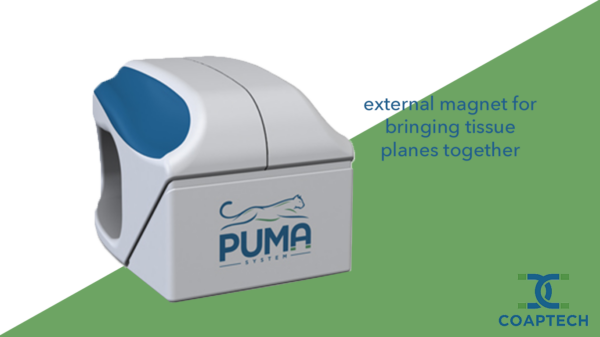Hunniwell Lake Ventures || News
Hunniwell’s Series B Investment CoapTech Awarded $1.6 Million NIH Grant
November 27, 2020 || Hunniwell’s Series B Investment CoapTech was recently awarded $1.6 Million from NIH to finalize the development and trial of its Pediatric PUMA-G System. The Pediatric PUMA-G System expands upon CoapTech’s current PUMA platform for adults and addresses unique challenges faced by children. Hunniwell is excited to see CoapTech thriving, parallel to our mission to See, Treat, and Heal patients.
Read more of Hunniwell’s Resources
Hunniwell Lake Ventures’ Series B Investment CoapTech Inc. announced today that the National Institute of Diabetes and Digestive and Kidney Diseases (NIDDK) within the National Institutes of Health (NIH) awarded CoapTech a two-year, $1.6M R44 Small Business Innovation Research (SBIR) Phase II Grant to finalize development of and trial its Pediatric PUMA-G System. This $1.6M in new NIH funding follows Hunniwell Lake Ventures recent $7M Series B financing and prior $225,000 Phase I SBIR R43 grant completed earlier this year to prototype and test the device. The Pediatric PUMA-G System expands upon CoapTech’s current PUMA platform for adults and addresses unique challenges faced by children. Reviewers supported the technology as having the potential to revolutionize feeding tube technology for pediatric patients.
The $1.6M grant will clinically evaluate the Pediatric PUMA-G System in collaboration with three premier pediatric medical centers: NewYork-Presbyterian Morgan Stanley Children’s Hospital, Children’s Hospital of Philadelphia (CHOP), and Children’s National Hospital of Washington, DC. CoapTech will study the safety and effectiveness of the percutaneous ultrasound gastrostomy (PUG) procedure in a pediatric population. The PUG procedure is the world’s first and only ultrasound-based procedure for placing semi-permanent feeding tubes into the stomach. These feeding tubes are vital for children who cannot eat or swallow, and require liquid nutrition (known as enteral feeding). Common feeding tube placement procedures for children may expose them to significant risks from invasive surgical tools or from ionizing radiation, which can lead to cancer in young patients at elevated rates. The PUMA-G System is less invasive, using benign ultrasound waves to help physicians image the body during the procedure.
“Our IR team is excited to work with the Coaptech team to develop a less invasive method of placing feeding tubes for small children. This new method will minimize the duration of anesthesia and eliminate x-ray exposure, two factors which are important considerations for our patients.”
– Dr. Karun Sharma, Director of Interventional Radiology at Children’s National Hospital
“Our IR team is excited to work with the Coaptech team to develop a less invasive method of placing feeding tubes for small children,” said Dr. Karun Sharma, Director of Interventional Radiology and site leader at Children’s National Hospital. “This new method will minimize the duration of anesthesia and eliminate x-ray exposure, two factors which are important considerations for our patients.”
“We’re excited to participate with our colleagues at CHOP and Children’s National Hospital on the groundbreaking Phase II study supported by the NIH SBIR grant,” said Dr. Sheryl Tulin-Silver, Assistant Professor of Radiology and Director of Pediatric Interventional Radiology at Columbia University Irving Medical Center. “Our extensive experience working with the PUMA-G System in adult patients during the COVID pandemic—performing ultrasound-guided procedures at the bedside—led to working with the CoapTech team to help develop the Pediatric PUMA-G System and address the unique challenges faced by children.”
News Provided by CoapTech and EIN Newswire.
![]()
Hunniwell Lake Ventures (HLV) is a Palo Alto-based VC firm that invests exclusively in medical devices. Founded by Richard Fang and Daniel Teo, successful medical device entrepreneurs turned venture capitalists, Hunniwell Lake Ventures’ mission is to make surgery safer, more accessible, and less invasive by investing in surgical innovations that help medical providers See, Treat and Heal better.


